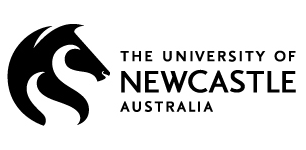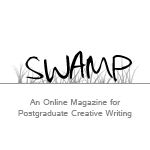The Infinite City of Darkness and Light
Rhys William Tyers (La Trobe University, Australia)
Our world is famed for its labyrinthine cities. Basing our models on the great structure of Daedalus in Crete, we have endeavoured to create ever more complicated and baffling puzzles with which to entrap ourselves; in which to hide ourselves away from the growing absurdity. We have the intricate yokochou of the Tokyo backstreets; the ancient and acclaimed viazza and vicolo of western Rome; the petite and clandestine ruelles of Parisian intrigues; the Joycean construct that begins and ends in just one Dublin day; and the Argentine variety, the callejones or calleja that one finds in Buenos Aires. However, beyond these magnificent constructions is a more modern and baffling example. The city is known by many names, but no more intriguing than the original:
A phonetic transliteration from the original Thai:
Krungthepmahanakhon Amonrattanakosin Mahintharayutthaya Mahadilokphop Noppharatratchathaniburirom Udomratchaniwetmahasathan Amonphimanawatansathit Sakkathattiyawitsanukamprasit
An English (literal) translation:
City of angels, Great City of Immortals, Magnificent City of the Nine Gems, Seat of the King, City of Royal Palaces, Home of Gods Incarnate, Erected by Visvakarman at Indra’s Behest.
Basing a city on such a name demands a certain type of city, a certain type of labyrinth. In the year 1782 the first king of the Chakri Dynasty, Rama I, assembled seven teams. In these seven teams – who he expected to work in ignorance of each other – he assembled an engineer, an architect, an artist, a metaphysician and a Buddhist monk. These seven teams created what was to become Bangkok. The original plans are now lost, but the city remains and it is within these streets where our tale begins.
Dr. Somchai, with a PhD from Harvard University in the Metaphysics of Criminology, a lumpy pinstriped suit that he bought at a charity shop for $5.50 and a fading, olive green Stetson, was the most conspicuous detective in the City of Angels.
Before leaving for Harvard, he had studied the rebus of Bangkok at the prestigious Thammarsart University located on the banks of the Chao Praya River, in Sanarm Luang. The conclusion he reached in his dissertation, entitled ‘Encouraging the Labyrinth: An Analytical Approach,’ was that the only way to discover any kind of pattern in the chaotic discourse that is Bangkok is to employ the Dhammapada, the Trippitaka, and be well versed in the Cantos of Dante Alighieri. And, although his dissertation was published to some acclaim, he only discovered hints of connections.
Since returning from Harvard, Dr. Somchai had made a host of enemies. Guido da Montefeltro, wanted for fraud, who had escaped from Dr. Somchai by jumping out of a third story window and who now wore the scar of that encounter in a form of a very pronounced limp. Mr. Icarus, who had escaped from one prison only to find himself in a prison constructed of his thoughts of revenge. Many believed he drowned during his escape attempt, but many others, including the good doctor himself, believed the evil Mr. Icarus to be hiding somewhere in the city, biding his time, waiting for an opportunity to exact his revenge.
Due to his reputation and intelligence, the Bangkok Police had retained the services of the doctor and he was an ongoing paid consultant. When a baffling crime was committed in the city, Dr. Somchai was called in and treated with reverence.
Crime was rife and continued to be so because of the chaotic nature of the city. The street numbers, for instance, were not sequential and it was not unusual to be met with signs down the left hand side of the street: alley 1, followed by alley 1½, alley 5, alley Amarat, alley 9½ and this would be followed by three alleys that had no signs and that do not appear on even the latest of city maps.
Dr. Somchai, though not a master of the labyrinth, understood some of its movements, but more importantly, he understood the way the criminals saw it. He anticipated their moves and waited for them; Stetson askew, puffing on a menthol cigarette with a cunning smile on his lips.
Many had vowed to destroy the good doctor, but so far all had failed. His doctorate and his earlier dissertation helped him avoid detection, violence and even death.
The first murder was discovered in the Hotel of Infinite Light. Clad in mirrored glass, the hotel reflected the outside world in carnivalesque distortions: exaggerated and grotesque. Yet, contrary to its outside appearance, inside the hotel was an oasis of tranquillity. A large pond greeted guests at the entrance, exotic birds flew freely around the lobby and the décor reflected a tasteful blend of Japanese minimalism and the Baroque. The victim, a visiting Oxford academic, had had his eyes cut out, his throat slit and a knife plunged into his chest.
The good doctor approached Detective Boonchai and smiled.
‘May I examine the text?’
The body lay in the middle of the room, there was an obvious gap in the bookshelf and on the wall was a sketch and the letter ‘D’ in the victim’s blood. The sketch resembled a bearded chin and the ‘D’ was capitalized.
‘Examine away, my good doctor, but I believe that we have an open and shut case here. Do indulge me…’
Dr. Somchai removed his hat, sat on a candy coloured plastic chair near the window and crossed his legs. ‘Go ahead. You have my full attention.’
‘In the next room is Mohammad Ali Smith-Jones, the Saudi-English oil baron. It is common knowledge that he always carried large quantities of diamonds, rubies, American Express traveller’s cheques, and cocaine on his person when he travelled. I believe that our murderer was in search of one or all of the above listed. He chanced into the wrong room and the professor here, wound up lying on the floor unable to see the ceiling,’ the detective concluded, gesturing to the body.
‘Why the methodical nature of the crime? Why kill a man three times? Why paint the wall with the victim’s blood? Why steal one of the victim’s books? Your explanation sounds plausible, but not probable. From my reading of the scene I prefer a more rigorous analysis.’
‘Crime does not have to be interesting, my dear doctor. I believe that the painting and the missing book are merely a way for the criminal to throw us off the scent. A purely rational and common sense approach to the murder makes our job easier.’
‘Yes. But the job – speaking for myself personally, of course – must be made interesting. Your solution is easy: yes, but not comprehensive. In this case I would prefer an academic explanation. Here, on the floor before us, we have a dead professor. The body is annotated with clues; on the wall we have an unfinished portrait; and the bookcase is missing one volume. In a city that is lost in its own construction it is only fitting that the crime resemble a labyrinth, and that the killer, whomever he may be, is the minotaur and I…’ he stood, straightened his trousers and put on his hat, ‘I am Theseus.’
The second murder was discovered at the Montenegro Shipping Agency on an unnamed alley in Yawalart, Bangkok’s Chinatown. The area, known as the thieves market, spilled out of Chinatown and into the Thai districts to such an extent that making a distinction between the two was an exercise in futility.
Dr. Somchai arrived on the scene and entered the murder room. On the floor facing the ceiling was a man dressed as a 15th Century cardinal. His eyes had been cut out, his throat slit and a deep wound in his chest oozed fresh, black blood. Sketched on the wall in the victim’s blood was the letter ‘K’ and what looked like an egg shaped forehead. All that were missing were the eyes.
Dr. Somchai smiled as he raised a photograph of the first murder scene.
Detective Boonchai moved closer to the doctor. ‘What is it you see that is so amusing?’
‘The concierge informed me that the professor was interviewed earlier today. I need to see the students who conducted the interview.’
‘Why? Shouldn’t we concentrate on this murder – the blood is still warm.’
‘We mustn’t approach this new text until we have found a key to the analysis of the first. Bring them to me.’
Within an hour the good doctor was sitting at Café Subson, waiting for the student journalists. Before him on the table were the letters ‘D’ and ‘T’ and two photographs: the first showed a bearded chin and a small mouth; the second showed a large forehead, egg shaped, stained with the lines of age or worry.
A young man and woman approached the doctor.
‘Are you Dr. Somchai?’ asked the young man.
‘Indeed. You must be the journalists.’
‘Still students actually. Are we in trouble?’
‘No. I want to ask one question…May I?’
‘Of course.’
‘Did you take any photographs of the professor in his hotel room?’
The girl looked at her companion. ‘I did. I took a whole roll.’
‘Where are they, my dear?’
She reached into her bag and handed the doctor a stack of thirty-six photographs.
‘May I keep these?’
‘Of course.’
After scrutinizing the crime scene and comparing it with the photographs the doctor located the missing volume: Bloom, Marcel (1967) Masters of the High Renaissance (Mannerism): Religious Manifestations through the Eyes of Genius, Norton: New York.
The doctor made his way to Babel Books and handed the reference to a bespectacled sales assistant.
‘There is a copy. However, it is located in the uncharted territory on level seven. A guide will be with you shortly to aid you with your search.’ She printed the map and handed it to the doctor. ‘Good luck with your search.’ She seemed genuinely concerned.
After three hours of searching, cursing and playing with the idea of leaving Bangkok and finding a city that does not resemble a labyrinth, the guide called out from a pile of medieval cook books, ‘Eureka! I’ve found it!’
Dr. Somchai bought the book and retired to his room. He unplugged the phone, poured himself a glass of absinthe, put on Beethoven’s 9th symphony, dimmed the lights and opened the book.
The book itself was a labyrinth. It contained nine-hundred pages of frescos, sculptures, portraits, architecture and invention. Most of the men in the pictures were bearded and a fair few were balding with egg shaped foreheads. He read about Savoldo, Ill Pardenone, del Piobo, Beccafumi, Sansovino, Barruquete and more. Their names baffled him, but their visions of the world baffled him more. He roused himself and fetched his third glass of absinthe. After pouring half the contents down his throat he remembered the letters. Looking in the index, however, he discovered no-one with the initials ‘DT.’
Then he saw it.
Greco, El (1541-1614). Cretan-born painter, sculptor, and architect who settled in Spain and is regarded as the first great genius of the Spanish School. He was known as El Greco (the Greek), but his real name was Domenikos Theotocopoulos; and it was thus that he signed his paintings throughout his life, always in Greek characters, and sometimes followed by Kres (Cretan).
On the opposite page, small and inconspicuous, was the self-portrait of El Greco:

Still in his intoxicated state the good doctor left his flat and stole out into the night. He needed to find his way back into the labyrinth; he needed to rediscover his early fascination with the city and its construction. His previous studies whispered earnestly into his ear and strengthened his resolve.
The doctor, in a lucid moment of interpretation, guided himself through the city streets. Finally, when he thought that the labyrinth had swallowed him, he saw it, a green luminous light in the darkness.
The pub, named ‘The Greek,’ was located on an unnamed alley in Klong Toei. He stood outside for what seemed like hours, but was only a minute. He stepped forward and, pushing open the door, went inside.
From outside the pub had looked small; however, when he entered he was met with an enormous room, dimly lit and sparsely furnished. There were no patrons but there was a bartender behind the bar reading a paperback.
He approached the bar.
The bartender lifted his head from his reading and smiled.
‘Hello, Doctor. We have been waiting for you. Take the second door on the left. Don’t bother knocking. You are expected.’
The doctor turned, took his revolver out of its holster and started walking. In the distance was a green light that read ‘NO EXIT.’ He entered the second door on the left.
The room was almost pitch black.
‘Hello?’ he enquired.
‘I will be with you in a moment.’
A soft light went on and he saw a man before him, sitting behind a desk. He recognized the eyes and nose but the rest of the face was a mystery.
‘You once chased me into a labyrinth, Dr. Somchai. To save myself from capture I risked my own life by jumping out of an open window.’
‘da Montefeltro!’
‘Yes, I am he. I am a vain man, Doctor and also a vengeful one. I created a labyrinth to ensnare you, because I know how much you love those little puzzles.’
Two men stepped from the shadows and fastened the doctor’s hands behind his back. One of the men grabbed the revolver from his hand and handed it to da Montefeltro.
‘Why El Greco?’
‘I too was taken from my home; I too was incarcerated and forced to perform unspeakable acts. Your death will complete the crime and allow the labyrinth to grow.’
‘But I am Theseus!’ roared the doctor. They forced his head down and da Montefeltro placed the nozzle of the revolver to his right temple.
‘No, my dear doctor, you were always my minotaur.’
And with that da Montefeltro cocked the gun and fired.
Rhys William Tyers is a PhD candidate at La Trobe University in Melbourne. His research focuses on the metaphysical detective narrative as found in selected works of Haruki Murakami, Paul Auster, Roberto Bolaño and Patrick Modiano.






